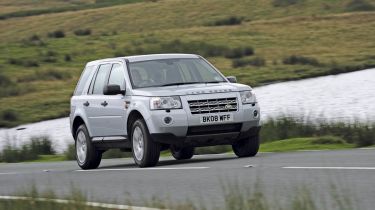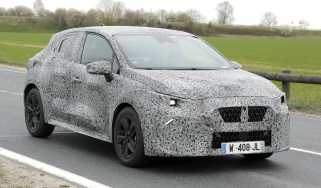LR Freelander TD4 SE
Compact Brit has the history and talent to take on its US rival.
Land Rover is the only brand here that can rival Jeep’s 65 years of four-wheel-drive experience. The Solihull firm celebrates 60 years of off-road excellence in 2008, but you’d be foolish to write off the Freelander 2 as a pure mud-plugger.
The latest model adopts the car-like looks that made its predecessor such a hit. Its stepped roofline and raised bonnet edges are famous Land Rover styling cues, and they combine with short overhangs to give the 4x4 a purposeful appearance.
The interior is equally classy. It is easily the most appealing cabin in this test thanks to its sensible layout, chunky switches and high-quality materials. It feels every inch the junior Range Rover, and it’s easy to find a comfortable driving position, thanks to a rake and reach adjustable steering column. Passengers in the back have the same amount of legroom as in the Jeep, although the Freelander’s lower floor means it feels more spacious. The Land Rover’s Achilles heel is its boot . Lift the tailgate and you’ll discover a modest load capacity. It’s the narrowest area of our four cars, and only the Jeep’s is shorter. Fold the rear seats and the Land Rover’s maximum load length lags behind, too.
However, head off-road and pride is restored, as the Freelander’s 220mm of ground clearance and 500mm wading depth are the best here. Only the Jeep feels tougher in the rough, but the British 4x4 will follow its US rival everywhere – and its cushioned ride provides a much more relaxed experience than the uncomfortable Jeep.
Land Rover’s excellent Terrain Response system also makes choosing the right 4x4 settings child’s play. A simple rotary knob on the centre console tunes factors such as throttle response and hill descent control to suit the conditions.
Head back to the road, and the Freelander shows the true depth of its abilities. Its 2.2-litre engine is the smoothest of our quartet. It produces 158bhp and 400Nm of torque, which is enough to power the Freelander from 0-60mph in 10.1 seconds – only the more powerful Nissan was quicker.
The Freelander isn’t as entertaining or as nimble as the X-Trail, but it’s accomplished on road. Ride comfort is impressive, body roll well controlled and the cabin always hushed. Precise steering and a smooth, responsive auto also make it as comfortable in the city as it is on the open road.
With such a broad spread of talents, does the excellent Freelander do enough to justify its hefty price tag?
Details
Price: £30,365
Model tested: LR Freelander TD4 SE
Chart position: 1
WHY: Our favourite SUV sets a tough benchmark. We find out if it still reigns supreme.
Economy
While the Freelander is a great all-rounder, there’s no getting away from the fact that it’s the most expensive car in this test. It’s also the costliest to maintain, although insurance and road tax bills are reasonable for this sector. What surprised us was the Freelander’s 48 per cent residual value after three years compared to its rivals here. Land Rover dealers haven’t done very well in our annual Driver Power customer satisfaction surveys, either.







